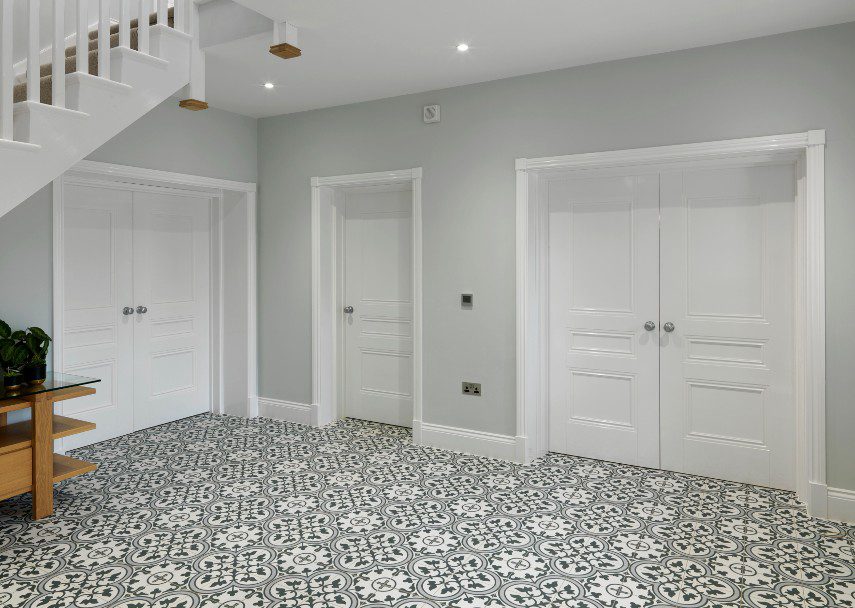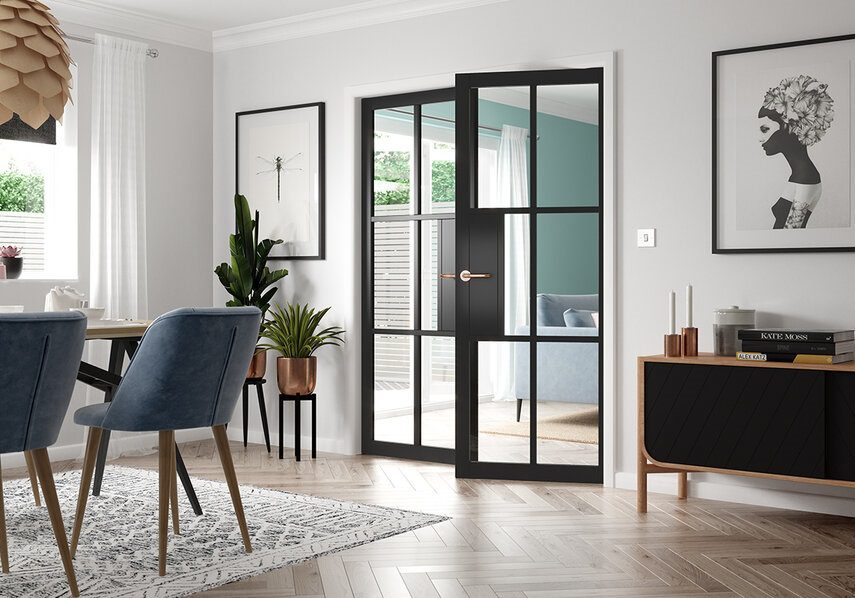How Do You Draught Proof Internal Doors?
Draughts coming in through internal doors can be frustrating. They can make your home feel colder and impact energy efficiency as you feel the need to increase the temperatures so you can reach a comfortable level. Whilst insulating your windows and external doors is a key part of improving the energy efficiency in your home, your internal doors can also be a source of unwanted airflow.
In this guide, we’ll explore methods and tips to draught proof your internal doors, helping you create a more comfortable and energy-efficient home.
How do I know if my internal doors need draught proofing?
Your internal doors will only need draught proofing if they are between a room that doesn’t usually get heated during the colder months. This might include a porch area that leads on to the outside, a door that leads to a conservatory, or just an unused room that doesn’t see as high temperatures as the rest of the home.
One of the obvious ways you’ll know if your internal doors need draught proofing is if you can feel a cold draught coming through the door. If you notice any cold spots around the door, this will usually suggest there’s a gap that could need attention. You’ll also often be able to see the gaps, as light will come through between the door and the doorframe. If you notice a lot of dust collecting around the door, this could also mean there’s a gap and a draught that’s bringing debris through.
If your door doesn’t close properly in the doorframe, this could also mean it’s letting a draught through. A door that fits snugly in the frame will typically not have gaps to let heat escape or let cold air in. If you find that a room has an inconsistent temperature, and you’re often having to increase the thermostat to bring it up to a comfortable temperature, this could be a sign that there’s a draught.

How to draught proof internal doors
There are a number of ways you can draught proof internal doors.
Fit a brush strip
One way is to fit a brush strip on the bottom of the door. This will be a great solution if you notice there is a big gap between the bottom of the door and the floor. The brush strip will fill the gap and can usually still pass easily over the floor, including carpets.
You will need to measure the width of the door, to ensure you get the necessary minimum size. You may need to cut it down to the exact size once you receive it, to ensure it fits properly and has no gaps. You can then screw or nail it in place, or some brush strips will come with an adhesive backing so you can stick it directly to the door. Bear in mind that you may need to position the brushes at a slight angle so it can sweep over the floor, but not too severe an angle that there is a gap.
Use a pillow draught excluder
Draught excluders are a simple way of minimising draughts through internal doors. These will look like long pillows and will sit at the bottom of your door to exclude draughts. These won’t be fixed to the door, so they will need to be moved out of the way when you need to open the door. However, they can be great when you know a door will be kept shut for a long time, such as overnight in a bedroom, or in the living room during the evening.
These types of draught excluders can be bought in many home shops, and come in all sorts of patterns, colours, and styles. They can be a great way of enhancing your interiors and adding a cosy touch for the colder months, as well as helping to maintain a steady internal temperature.
Add draught strips to the edges of the door
The bottom of the door isn’t the only place where gaps can let draughts in. Cold air can also get in through the top and sides of the door, if it doesn’t fit in the frame as it should.
If your door has gaps around the edges, you can install draught strips. These will typically be made from foam or rubber and can be stuck to the door – just remember to clean the door first to ensure it sticks properly. You can usually find draught strips in different colours, so you can find the right finish to match your door. You’ll need to measure your door, as well as the size of the gap, to ensure you get the right size for your needs.
Update old doors
If your door is severely damaged, old, and tired, updating it with a modern internal door may be the most efficient way of banishing draughts. Modern doors will be designed with improved sealing and insulations, helping to significantly reduce draughts and improve thermal performance. The right new door will be built with advanced materials and construction techniques, which can help to prevent gaps and leaks, and prolong the life of the door.
A new door will also help to improve the fit and alignment of the door. Replacement doors can be custom-fit to ensure a precise installation, reducing the likelihood of gaps and draughts. As older doors may become warped over time, a new door will help to improve the sealing without the need for additions such as a brush strip or draught strip.

Upgrade glass door panels
Glass can be a common culprit for adding to poor insulation in homes. If your doors have glass panels, upgrading the panels to more energy efficient versions can help to lock-in heat and keep rooms warm and toasty. If you have any glass panels that are cracked, be sure to replace them as soon as possible – not only will they let in draughts, but they can also be dangerous if left broken.
Keep internal doors shut
A good way of improving the energy-efficiency of your home is to keep internal doors shut. This will help to keep the heat inside each room, so you can maintain a comfortable temperature without having to adjust your thermostat. Keeping doors shut will ensure the heat stays in the room where people are, instead of escaping into areas of the house that aren’t being used.
To further improve the energy efficiency of your home, you can turn the temperature down in unused rooms if you have smart heating controls or if you can adjust your radiators individually. Remember that all rooms will usually need some level of heating during the colder months though, to prevent damp forming.
JB Kind has a huge range of interior doors in a variety of styles, so you can update your old doors and help improve the energy efficiency of your home. Download our brochure or contact us to find out more.